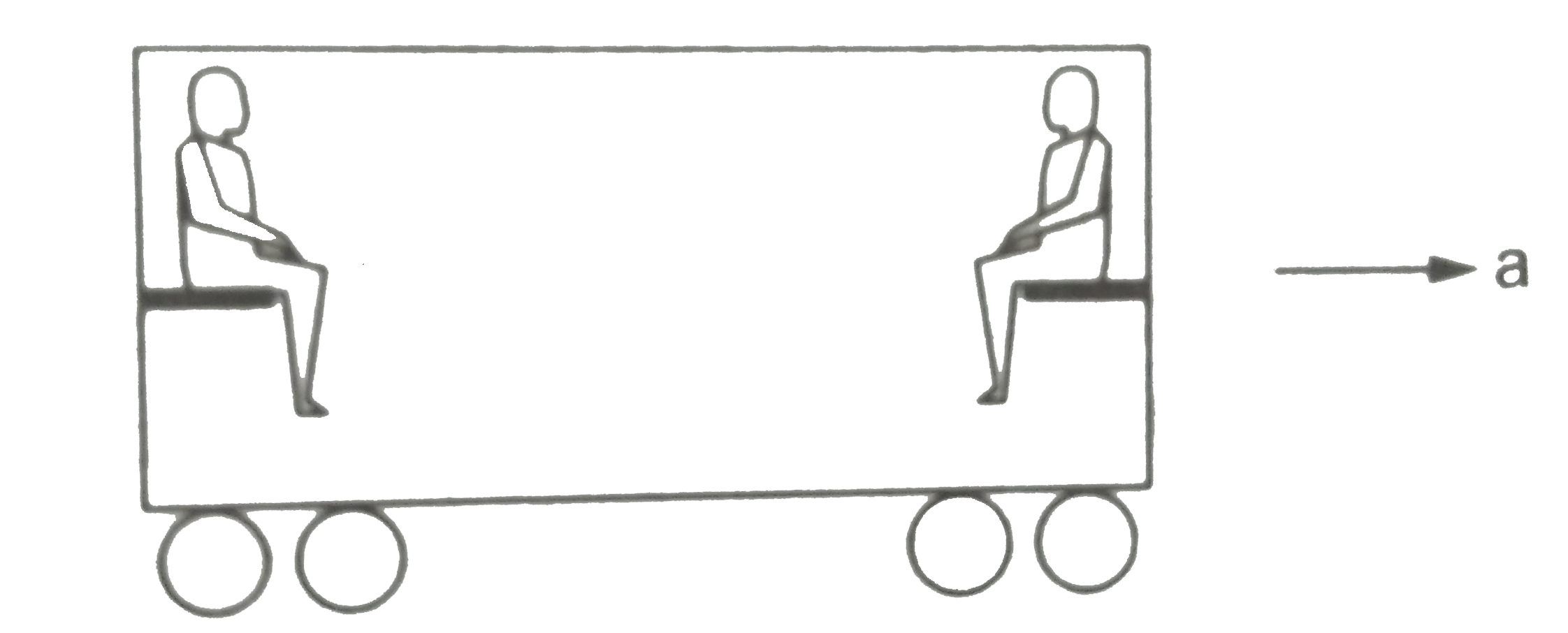Consider the situation of the previous problem. Take the table and the ball as a system friction is then an internal force. As the ball slows down the momentum of the system decreases. Which external force is responsible for this change in the momentum?
To solve the problem, we need to analyze the situation where we consider the table and the ball as a single system. The question asks us to identify the external force responsible for the change in momentum of this system as the ball slows down.
1. Define the System: We define our system as the ball and the table together.
2. Identify Forces Acting on the System:
- The ball experiences a frictional force acting opposite to its direction of motion, which is due to the interaction between the ball and the table.
- The table experiences a frictional force from the floor, which prevents it from moving.
3. Understand the Role of Friction:
- The frictional force between the ball and the table is an internal force within the system (ball + table).
- The frictional force between the table and the floor is an external force acting on the system.
4. Analyze the Momentum Change:
- As the ball slows down due to the frictional force between it and the table, the momentum of the ball decreases.
- Since the table does not move, the external force (friction between the table and the floor) is what keeps the table stationary, allowing the ball to lose momentum without causing the table to accelerate.
5. Conclusion:
- The external force responsible for the change in momentum of the system (ball + table) is the frictional force between the table and the floor.
Final Answer:
The external force responsible for the change in momentum of the system (ball and table) is the frictional force between the table and the floor.
---
- The ball experiences a frictional force acting opposite to its direction of motion, which is due to the interaction between the ball and the table.
- The table experiences a frictional force from the floor, which prevents it from moving.
- The frictional force between the ball and the table is an internal force within the system (ball + table).
- The frictional force between the table and the floor is an external force acting on the system.
- As the ball slows down due to the frictional force between it and the table, the momentum of the ball decreases.
- Since the table does not move, the external force (friction between the table and the floor) is what keeps the table stationary, allowing the ball to lose momentum without causing the table to accelerate.
- The external force responsible for the change in momentum of the system (ball + table) is the frictional force between the table and the floor.
The external force responsible for the change in momentum of the system (ball and table) is the frictional force between the table and the floor.
Topper's Solved these Questions
- CENTRE OF MASS, LINEAR MOMENTUM, COLLISIONBOOK - HC VERMA ENGLISHCHAPTER - CENTRE OF MASS, LINEAR MOMENTUM, COLLISIONEXERCISE - Objective -2
11 Videos
- CENTRE OF MASS, LINEAR MOMENTUM, COLLISIONBOOK - HC VERMA ENGLISHCHAPTER - CENTRE OF MASS, LINEAR MOMENTUM, COLLISIONEXERCISE - Exercises
64 Videos
- CALORIMETRYBOOK - HC VERMA ENGLISHCHAPTER - CALORIMETRYEXERCISE - Short answer
9 Videos
- CIRCULAR MOTIONBOOK - HC VERMA ENGLISHCHAPTER - CIRCULAR MOTIONEXERCISE - Question for short Answer
10 Videos
Similar Questions
Consider the situation of the previous problem. The force on the central charge due to the shell is
View SolutionA ball is moved on a horizontal table with some velocity. The ball stops after moving some distance. Which external force is responsible for the change in the momentum of the ball?
View Solution
Knowledge Check
The negative of the work done by the conserative internal forces on a system equals the change iln
Atotal energyBkinetic energyCpotential energyDnone of these
Which of the two persons show in figure is more likely to fall down? Which external force is responsible for his falling down?
 .
.
View SolutionThe work done by the external forces on a system equals the change in
View SolutionA : Internal forces can change the kinetic energy but not the momentum of the system.
R : The net internal force on a system is always zero.
View SolutionThe negative of the work done by the conserative internal forces on a system equals the change iln
View SolutionThe work done by all the forces (external and internal) on a system equals the change in
View SolutionThe work done by all the forces (external and internal) on a system equals the change in
View SolutionIn the previous problem, what will be force with which system moves? (Use(√2)=1.4)
View Solution
